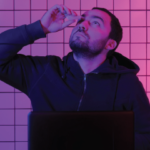The use of endotyping, or grouping patients by pathobiologically similar subtypes, has begun to help patients with Sjögren’s disease by identifying which patients have a phenotype that’s more likely to respond to certain therapies than others, Dr. McCoy said.
The use of endotyping is likely to usher in more treatments going forward. Several drugs have met primary end points in phase 2 studies. “That’s likely because we’ve learned from our failed trials. Not all Sjögren’s patients will respond to a drug. So you might select your Sjögren’s patient by who should respond,” she said.
Endotyping may help identify which patients could benefit from certain drugs, such as hydroxychloroquine, using endotyping techniques, such as stratifying by symptom burden.4
Although the dryness from Sjögren’s disease tends to get worse over time, future treatments hold promise, and resources that rheumatologists can share with patients are available, Dr. McCoy said. These resources include the patient support group from the Sjögren’s Foundation. The foundation also has a monthly meeting called Sjö-Net geared toward clinicians interested in Sjögren’s disease.
Vanessa Caceres is a medical writer in Bradenton, Fla.
References
- Baer AN, Hammitt KM. Sjögren’s disease, not syndrome. Arthritis Rheumatol. 2021 Jul;73(7):1347–1348.
- Fisher BA, Jonsson R, Daniels T, et al. Standardisation of labial salivary gland histopathology in clinical trials in primary Sjögren’s syndrome. Ann Rheum Dis. 2017 Jul;76(7):1161–1168.
- Gottenberg JE, Ravaud P, Puéchal X, et al. Effects of hydroxychloroquine on symptomatic improvement in primary Sjögren syndrome: The JOQUER randomized clinical trial. JAMA. 2014 Jul 16;312(3):249–258.
- Collins A, Lendrem D, Wason J, et al. Revisiting the JOQUER trial: Stratification of primary Sjögren’s syndrome and the clinical and interferon response to hydroxychloroquine. Rhematol Int. 2021 Sep;41(9):1593–1600.

